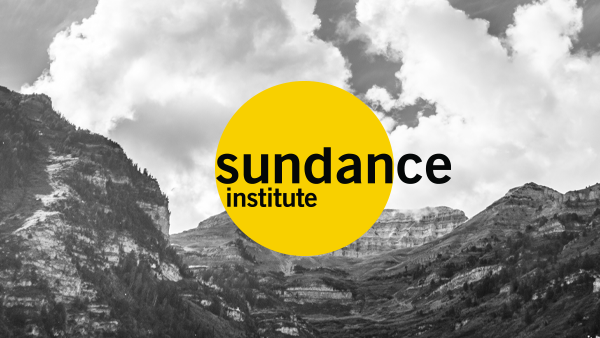Cherien Dabis, Writer/Director of AMREEKA
Part 1 – ISTANBUL
Aside from its remarkable history and the fact that it’s the only city in the world to sit on two continents, Istanbul is one of the most vibrant places I’ve ever visited. The chilly day I arrived – apparently the coldest of the year with blustery winds and a continuous drizzle – couldn’t even keep revelers at home. They were out in droves, strolling down festive Istiklal or Independence Avenue (Istanbul’s famous, pedestrian boulevard) and crowding around heaters at outdoor cafes. It was invigorating to simply be there!
The Film Forward program kicked off with a cocktail reception hosted by the U.S. Consulate and a brief press conference followed by dinner with our !F Festival hosts and friends. Later, I ran to a movie theater packed with festivalgoers to catch the end of my screening and conduct a Q&A. What struck me about the questions was they weren’t the usual ‘what inspired you to make the movie?’ Or ‘where did you find your actors?’ Those questions are often asked, and there’s nothing wrong with them. But these questions were deeper, more political, this audience more aware of their place in the world and their role in shaping history. My favorite of these included, “Since you’ve been following the U.S. media’s representation of Arab Americans since the 1991 Gulf War, how have you seen it change since then?” Given how much the world has – in fact – changed, it was an exciting question to answer!
The funniest question had to do with representation. It went something like this: “Minorities aren’t really represented in the U.S. and when they are, they’re not well represented. Take the Chinese Americans, for example. They’re terribly misrepresented. Do you ever see yourself trying to represent them?” At that point, I think I may have laughed. The question caught me off guard. I don’t feel qualified to represent the Chinese American experience, I replied, flattered that someone thought I could even begin to do another people justice. I think I’ll probably continue to represent Arabs and Arab Americans to the best of my limited ability. But I do hope that one day, we’ll be able to see all colors and ethnicities of people on all size screens in stories that aren’t necessarily about their “otherness.” That’ll be the day we no longer need stories about minority groups, because we’ll no longer be treated as outsiders. That’ll be the day we arrive. When I posted this brief exchange on my Facebook page, a friend asked a very good question, one that I’ll consider asking any audience member who broaches a similar subject in the future: “How do you think the Turkish media handles the representation of minorities in Turkey? And what, if anything, can you do about it?”
Part 2 – ESKISEHIR
A quant little college town in northwestern Turkey, Eskisehir (which literally means Old City) is home to Anadolu University, the largest university in Turkey and the one with the best film department. At least according to the Vice Dean, our enthusiastic host for this portion of the trip.
The highlight of our first evening there involved listening to students pitch their film ideas for feedback. Two brave undergraduate film students stepped forward to pitch three different ideas each, and suddenly, I felt like a judge on American Idol. From a donkey-riding librarian circa 1930 to a three-day festival when sweets are eaten to celebrate the end of the fast of Ramadan, each story was colorful, specific and unique. The experience made me think of something I heard Alesia Weston, associate director of Sundance Institute’s Feature Film program, say regarding what they look for in screenplay submissions: Stories that only you can tell. These ideas were clearly stories that only these particular students could tell. It was inspiring and encouraging to hear them.

Cherien Dabis with !f Istanbul guests. Photo by: Stacey Marbrey
The following day involved a screening and Q&A of Amreeka. After hearing about how the film is semi-autobiographical, inspired by my own family and what happened to us in a small town in Ohio during the first Gulf War, one student asked a question that I’ll never forget. He could see that the film came from a place of pain. “If I was you, I probably would’ve made an angry film,” he said. “But what you’ve done so well is that you took your pain and turned it into something light and gentle. How were you able to do that?” No one had ever quite put it that way before. It was lovely and surprising that someone recognized what I’d instinctively done. Later, that same student – who seemed blown away by the film – called it propaganda. I was a bit stumped, because I had earlier mentioned that the only negative reaction I’d ever gotten was from one American audience member who dismissed the film as Palestinian propaganda. After some explanation, I came to discover that the student meant that the movie was good propaganda, humanist propaganda. Is there such a thing as good propaganda, I wondered? Have we so associated it with negative meaning that we’ve forgotten it’s very definition? Has humanism become a cause? I looked the word propaganda up but still didn’t feel I had my answer. This one will require further investigation.
Another student said that along with Crash and American History X, it’s the best film he’s ever seen on the subject of racism and discrimination. He asked if he could have a copy of the film and then he asked for my autograph!
Part 3 – ANKARA
The running joke about Turkey’s capitol goes something like this: Do you know what the best thing about Ankara is? You rack your brain wondering what the answer could be, only to find out that it’s: The road to Istanbul. We were told again and again that the city is dull, grey and downright boring. So when we arrived to our lovely boutique hotel in a bustling shopping district on one of the sunniest days of the trip thus far, we were more than pleasantly surprised.
That afternoon, Pelin Turgut, one of the co-founders of !F took us to Ankara University where she moderated my case study of Amreeka. We led an audience of students through the process of making the film and showed several clips of it along the way. One student asked yet another question I’d never been asked before: “At what moment did you know you wanted to be a filmmaker? Was it something that inspired you? Maybe another movie you saw?” I had completely forgotten what it was up until that moment. But it came rushing back to me. It was Ziad Doueiri’s West Beirut. It came out in 1998 and after seeing it, I thought to myself, I want to do that! I had had that thought before but West Beirut transformed it from a fleeting desire into a concrete career possibility. It was the movie that made me realize that I could use the language of cinema to tell the story of my family, the story I’d been longing to tell since I was 14, but up until then, didn’t know how. I read about Ziad and other filmmakers in order to find out how they got their start and began researching film schools right away. Less than three years later, I moved to NY to start Columbia’s MFA film program.
Film Forward concluded at a mall movie theater where we met the U.S. Ambassador and spoke with several others from the embassy. They congratulated us on our films and hung around to chat about our experiences making them. I was surprised by how willing they were to help us get the word out. Upon learning that Amreeka will soon be released in the UK, the Counselor for Public Affairs kindly offered to put me in touch with his colleagues at the American embassy in London. Who knows, he said, maybe they can help you get some publicity. His wife astutely added that given the revolutions across the Arab world, now was the perfect time for the movie’s release. I couldn’t agree more!




